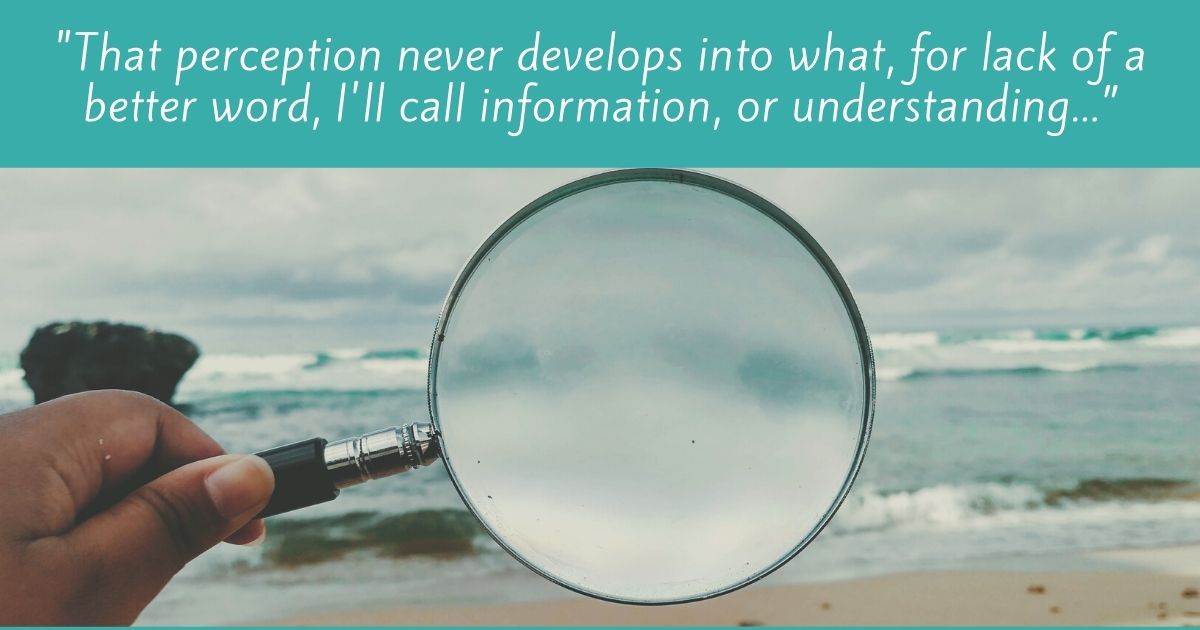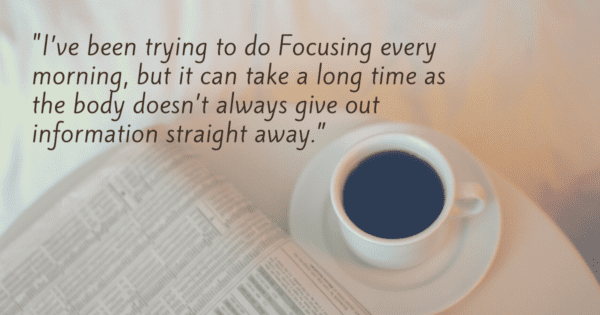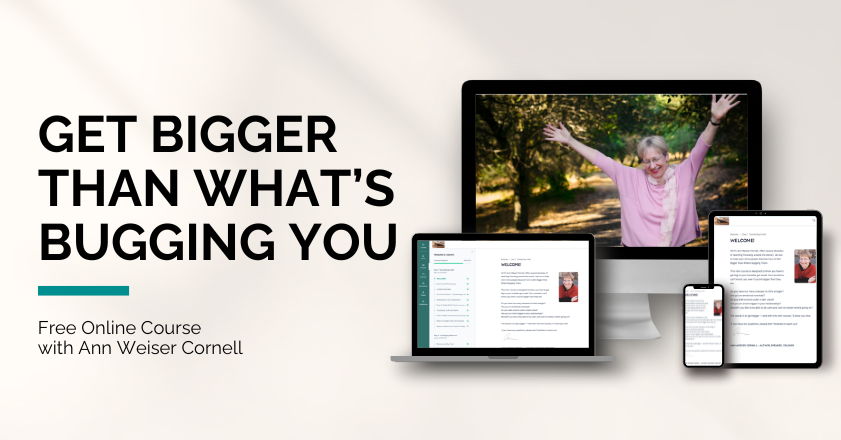What if your body is trying to communicate with you, but you don’t understand its language? Read on…
Barry writes:
I’ve been trying to do Focusing for nearly 3 years, but have had a persistent stumbling block.
I can often sense and describe what does seem to be a felt sense, but that perception never develops into what, for lack of a better word, I’ll call information, or understanding. The felt sense, even after my spending time with it and describing it, never “translates” itself into a thought or word that I can identify and relate to any of the issues I’m trying to deal with.
Dear Barry:
I so admire your persistence and dedication to doing Focusing. And yes, I think I can help, because I know this issue very well.
You have a body sense, like tightness in the throat… and it came when you thought about your issue… like getting an article finished… (I’m just making up examples for the sake of discussion)… so that is clearly a felt sense, which is a body sense that is about your life somehow.
But you can’t make the bridge from describing the tightness to what is supposed to happen next, a thought, a word, a sense of insight or understanding.
And this is quite common. So common that when I was first teaching Focusing, I spent a lot of time figuring out how to show people the way to do this bridging, from body sense to meaning and insight.
As you’ve already discovered:
- If you just wait until a word or thought pops up, you can wait forever.
- And if you try to figure it out or guess what it means, that won’t work either.
So here’s what you do.
- Make a relationship with the body sense. Let this kind of language guide you: “I am sensing something in me feels tight about getting the article finished.”
- Stay with it with your awareness, sensing more that you can feel but hasn’t been put into words yet. For example… you called it “tight,” but when you stay with it, you realize it’s a particular kind of “tight.” For example, maybe it’s: “Compressed, like someone is pressing from above.”
- As you stay with it (and keep on being aware of your issue as well), be open to sensing if it has its own emotion or mood. “It’s nervous.” Or scared, or angry, or shy. This is a powerful moment. It opens doors of meaning.
People are able to sense other people’s (and animals’ emotions). We can use this same ability internally. It’s no more difficult than sensing the emotion of a dog or a baby.
It’s not a big revelation. It’s just a little bit more. But that’s how this works: baby step by baby step.








